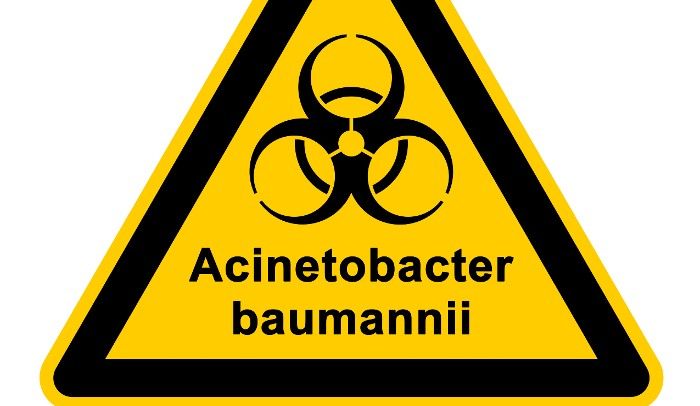An Antibiotic for Gram-Negative Bacterial Infections: The PROVE Study
New data about an antibiotic was announced at ECCMID that can treat Pseudomonas aeruginosa and Acinetobacter baumannii infections.
Acinetobacter baumannii
(Adobe Stock, unknown)

Medical professionals know the critical need for developing new antibiotics, particularly for gram-negative bacterial infections. Recently, an announcement was made at a European infectious disease conference about a antibiotic for Pseudomonas aeruginosa and Acinetobacter baumannii infections.
Simon Portsmouth, MBChB, MD, FRCP, head of clinical development, Shionogi Inc, answered questions from Infection Control Today® (ICT®) about the announcement made by the 33rd European Congress of Clinical Microbiology & Infectious Diseases (ECCMID) on behalf of Shionogi on April 17, 2023, from Copenhagen, Denmark.
ICT: What was the announcement made at ECCMID?
Simon Portsmouth, MBChB, MD, FRCP: Shionogi announced key data for Fetroja (cefiderocol), an innovative siderophore cephalosporin, including new real-world evidence demonstrating its efficacy against some of the most difficult-to-treat gram-negative bacterial infections.
Included in the announcement were interim results from PROVE (Retrospective Cefiderocol Chart Review), an ongoing international, retrospective study aiming to assess real-world outcomes and safety of Fetroja (cefiderocol) in hospitalized adult patients with gram-negative bacterial infections across the European Union and United States sites.
The interim analysis presented at ECCMID demonstrated that cefiderocol achieved clinical cure in 65% and 60% of patients with Pseudomonas aeruginosa and Acinetobacter baumannii infections, respectively, the majority of whom were severely ill with comorbidities.
ICT: Why is finding an antibiotic for Carbapenem-resistant gram-negative bacterial infections significant?
SP: The World Health Organization (WHO) states that bacterial antibiotic resistance is one of the biggest threats to global health.1 In the U.S., almost 3 million antibiotic-resistant infections occur yearly, and more than 35,000 people die.2 To add to this urgency, a WHO analysis presented at ECCMID found that there are not enough new antibiotics in development, especially those that target Acinetobacter baumannii and Pseudomonas aeruginosa.3
The WHO has classified certain gram-negative pathogens (including Pseudomonas and Acinetobacter) as the most critical group in need of new antibiotic treatment, given that they are resistant to multiple drugs, including carbapenems.4 In many cases, carbapenems are used as a last resort, highlighting the importance of developing antibiotics for carbapenem-resistant gram-negative bacterial infections.
ICT: Please give ICT readers the study details.
SP: The study includes 194 patients with Pseudomonas aeruginosa infections treated with cefiderocol (123 from the US and 71 from the EU). Among these patients, the primary sources of gram-negative infection were respiratory tract infections and bloodstream infections with or without another infection site. Approximately 93% of patients had comorbidities; nearly half received mechanical ventilation and over a third received vasopressor support. The interim results show that cefiderocol achieved clinical cure in 65% of patients, and 81% were alive within 30 days of starting cefiderocol treatment. Fetroja was initiated for a documented pathogen in the majority of cases (77%) and as monotherapy in 57% of patients.5
Also in the study were 98 patients with Acinetobacter baumannii infections (71 from the US and 27 from the EU). The patients had a respiratory infection and bacteremia as the most common infections. High levels of organ support were required in these patients, with 45% receiving mechanical ventilation and 30% requiring vasopressor support. Fetroja achieved clinical cure in 60% of patients, and 76% were alive within 30 days of starting treatment. Cefiderocol was used as a targeted treatment for documented infections or salvage treatment in approximately 90% of patients and as monotherapy in 41% of patients.6
ICT: What is the next step in the process?
SP: The PROVE study continues to build on a growing body of real-world evidence across the EU and the US demonstrating the efficacy of cefiderocol in adult patients with certain resistant Gram-negative infections, such as Acinetobacter baumannii and Pseudomonas aeruginosa. We will continue to evaluate cefiderocol against specific gram-resistant pathogens.
ICT: Do you have anything else you would like to add?
SP: As the increasing threat of antimicrobial resistance continues to be recognized, it is essential to develop antibiotics that show strong activity against resistant pathogens that the WHO deems to be high-priority pathogens. Fetroja continues to have an important role in helping patients combat specific gram-negative pathogens.
Click here for complete US prescribing information for Fetroja (cefiderocol).
References:
1. Antibiotic resistance. World Health Organization website. Accessed February 22, 2023. Available at https://www.who.int/news-room/fact-sheets/detail/antibiotic-resistance.
2. Antibiotic Resistance Threats in the United States, 2019. Atlanta, GA: U.S. Department of Health and Human Services, CDC; 2019. https://www.cdc.gov/drugresistance/Biggest-Threats.html
3. Not enough new antibiotics in the pipeline, concludes WHO review – especially those targeting deadly drug-resistant microbes. European Society of Clinical Microbiology and Infectious Diseases. Accessed April 19, 2023. https://www.eurekalert.org/news-releases/982758
4. WHO publishes a list of bacteria for which new antibiotics are urgently needed. World Health Organization website. Accessed February 16, 2023. https://www.who.int/news/item/27-02-2017-who-publishes-list-of-bacteria-for-which-new-antibiotics-are-urgently-needed.
5. Larcher R, et al. Real-world use of cefiderocol in the EU and US for Pseudomonas aeruginosa: interim data from the PROVE study. ECCMID abstract P2274
6. Timsit JF, et al. Real-world use of cefiderocol in the EU and US for Acinetobacter baumannii: interim data from the PROVE study. ECCMID abstract P2272
Show, Tell, Teach: Elevating EVS Training Through Cognitive Science and Performance Coaching
April 25th 2025Training EVS workers for hygiene excellence demands more than manuals—it requires active engagement, motor skills coaching, and teach-back techniques to reduce HAIs and improve patient outcomes.
The Rise of Disposable Products in Health Care Cleaning and Linens
April 25th 2025Health care-associated infections are driving a shift toward disposable microfiber cloths, mop pads, and curtains—offering infection prevention, regulatory compliance, and operational efficiency in one-time-use solutions.
Phage Therapy’s Future: Tackling Antimicrobial Resistance With Precision Viruses
April 24th 2025Bacteriophage therapy presents a promising alternative to antibiotics, especially as antimicrobial resistance continues to increase. Dr. Ran Nir-Paz discusses its potential, challenges, and future applications in this technology.